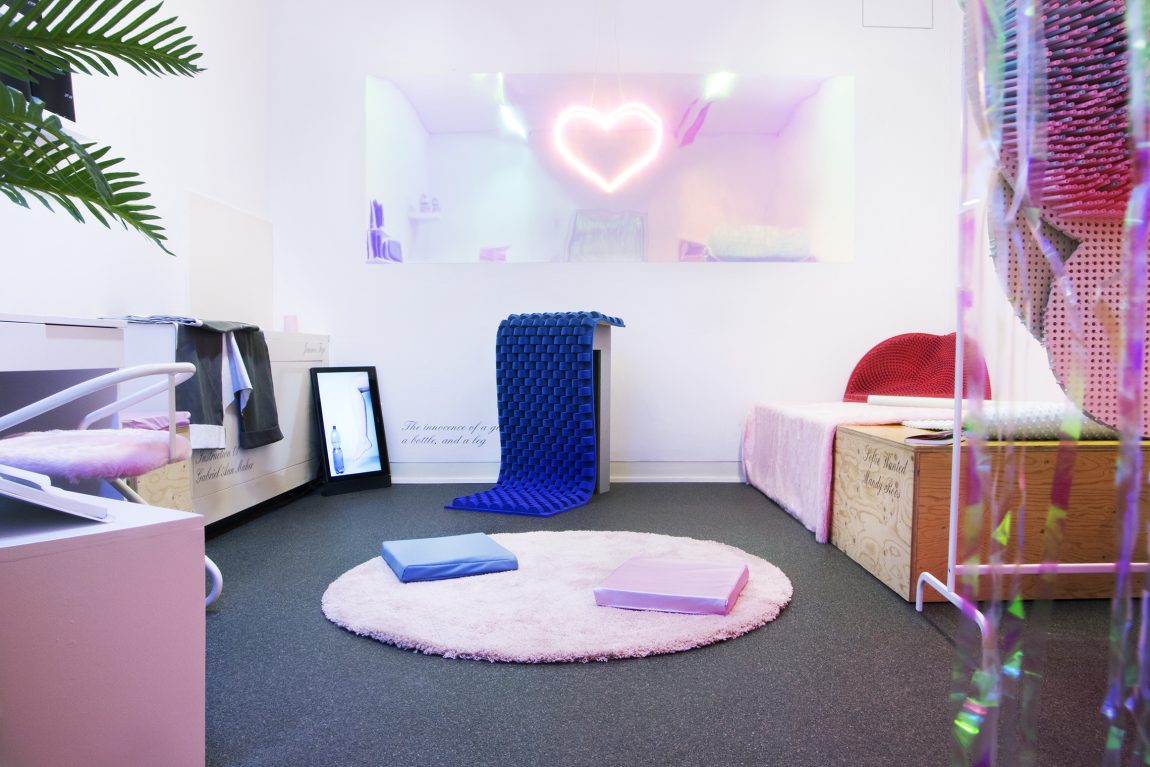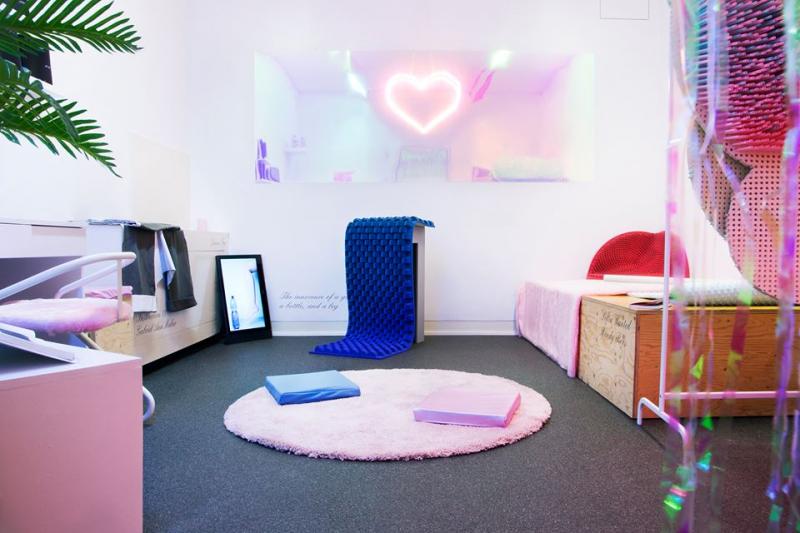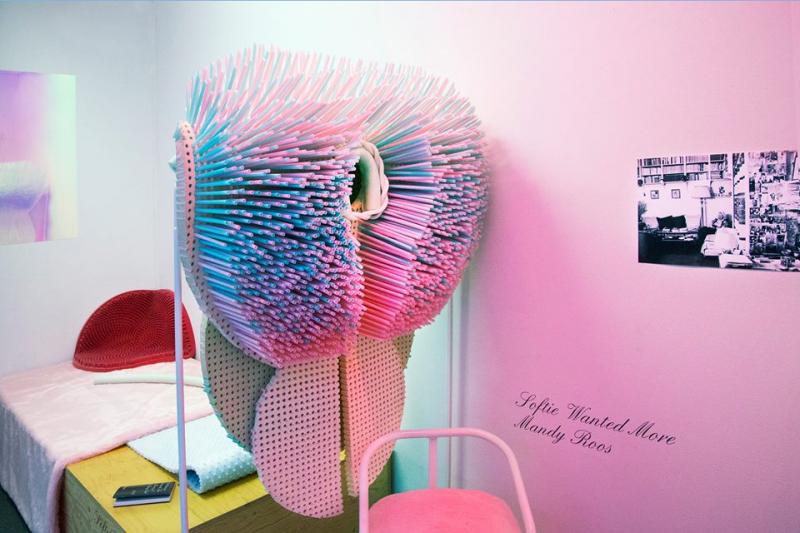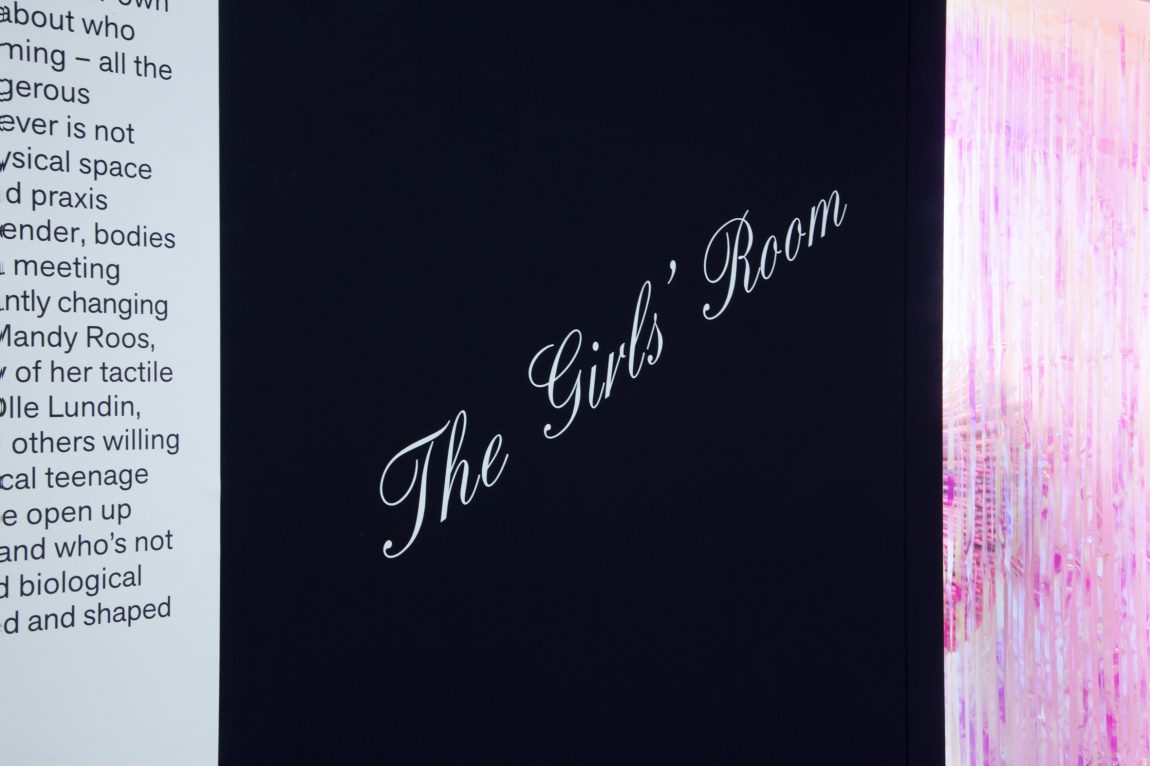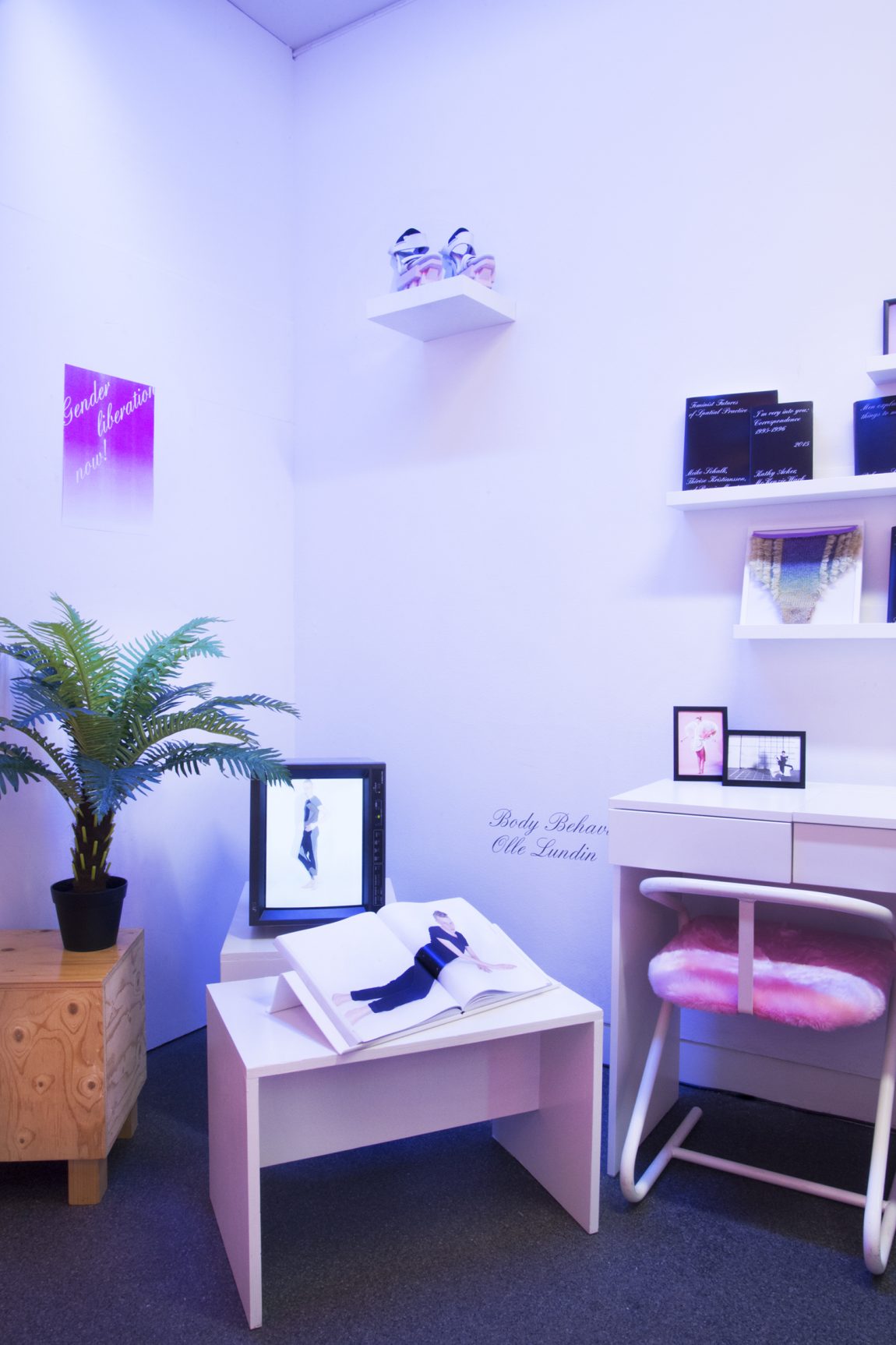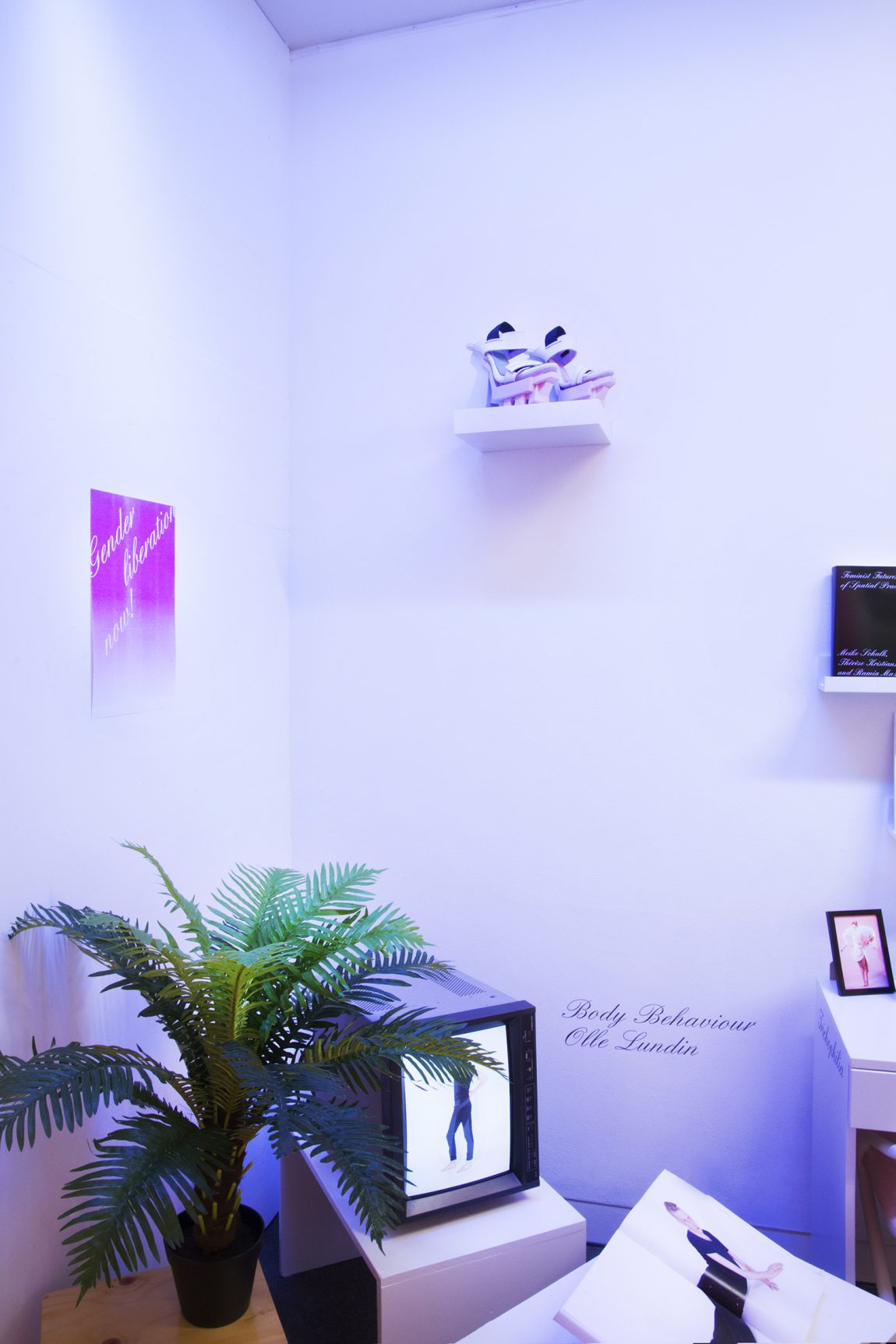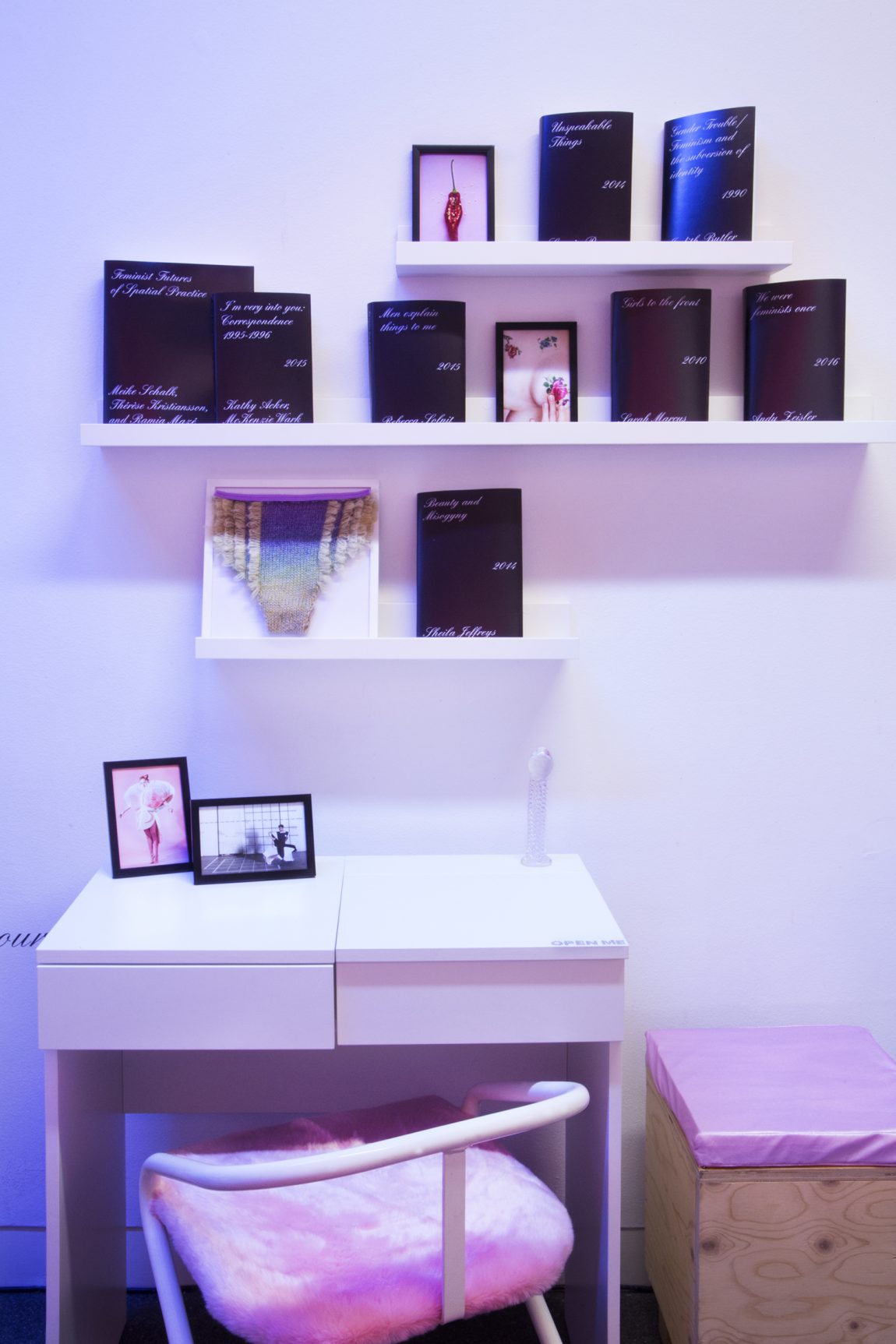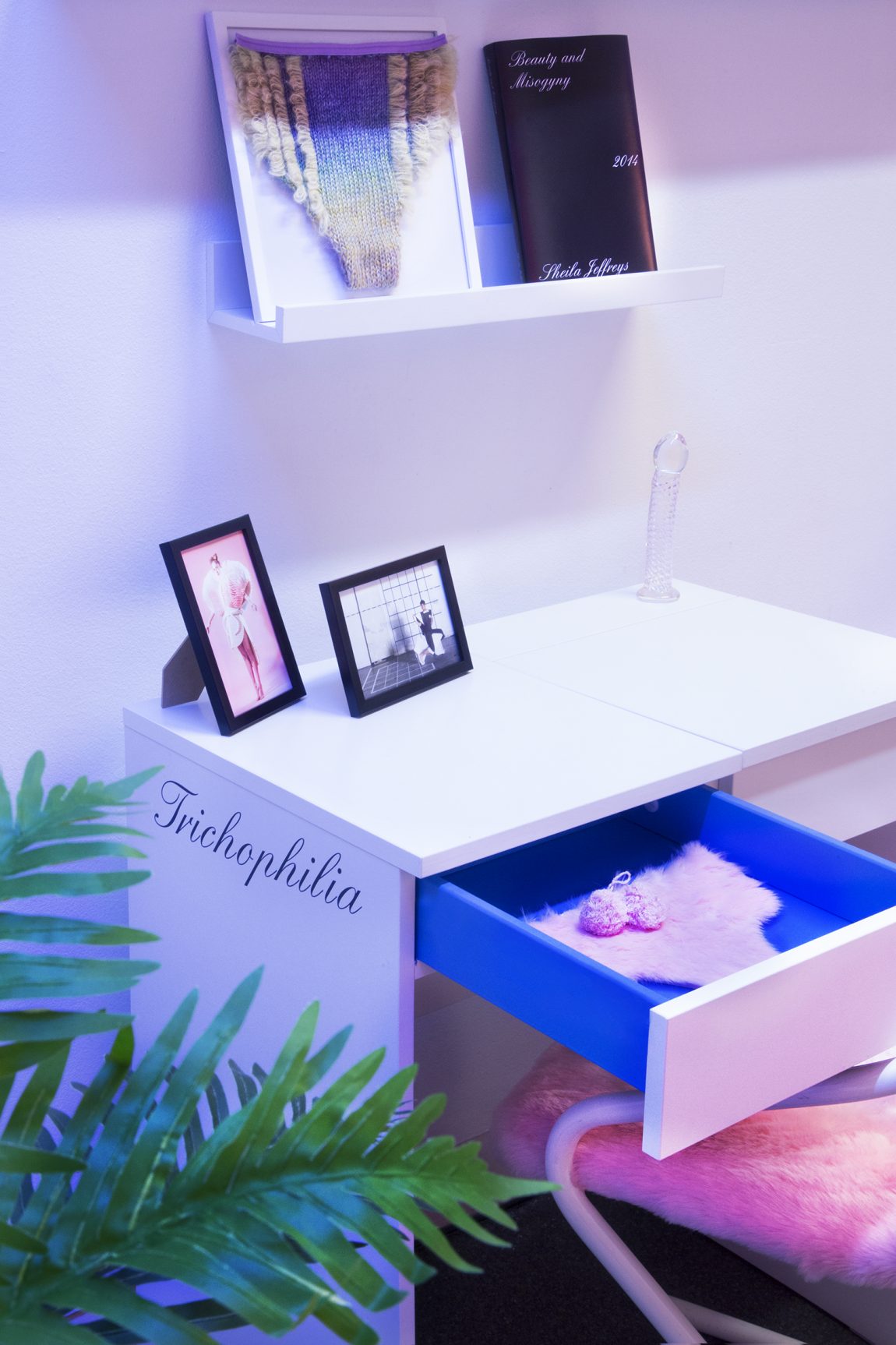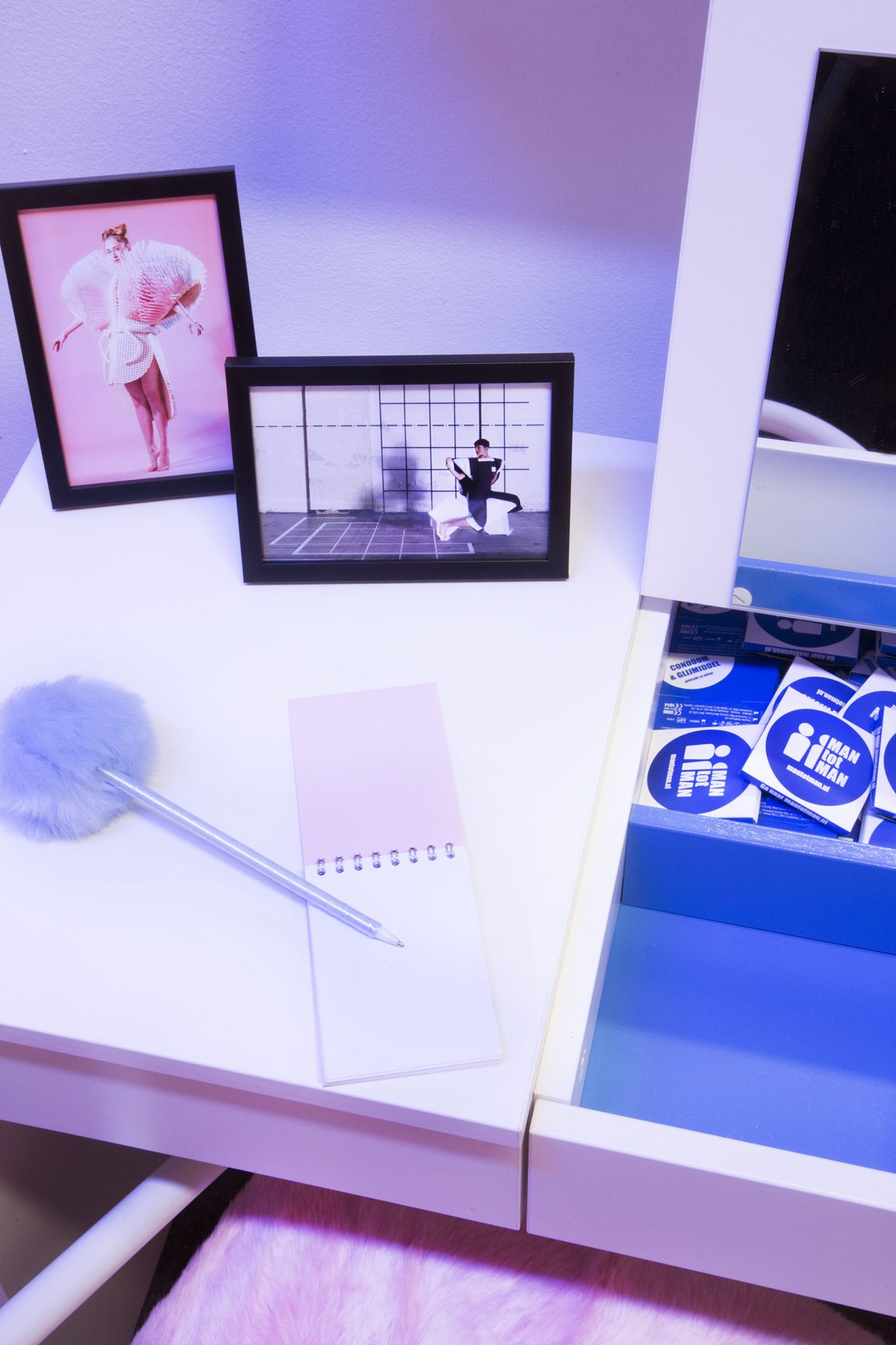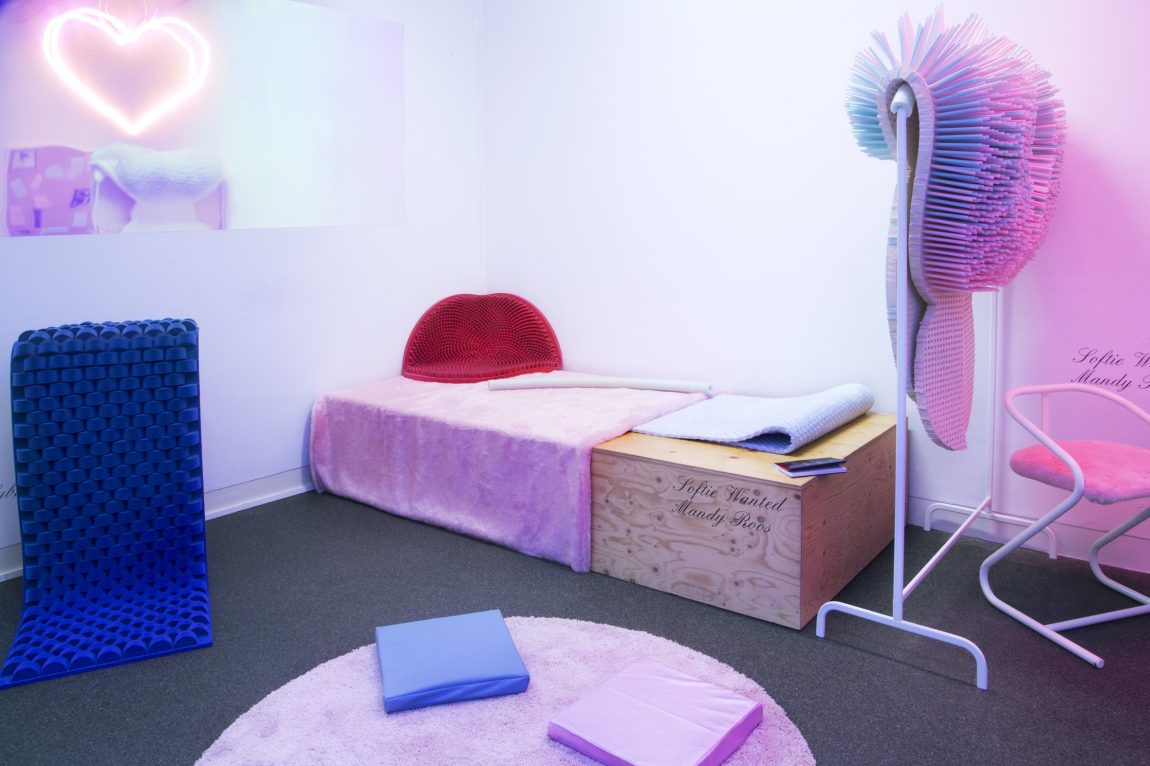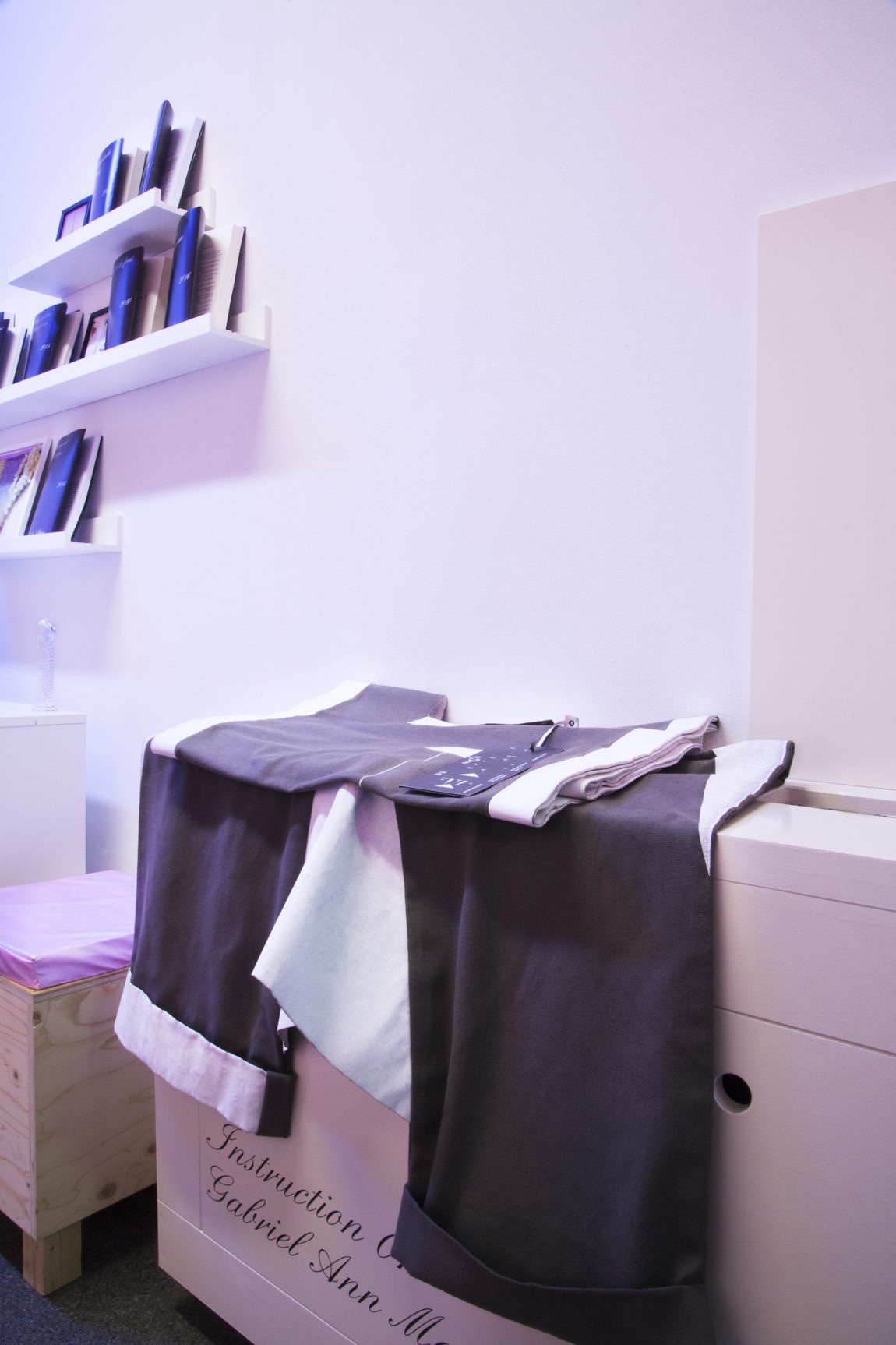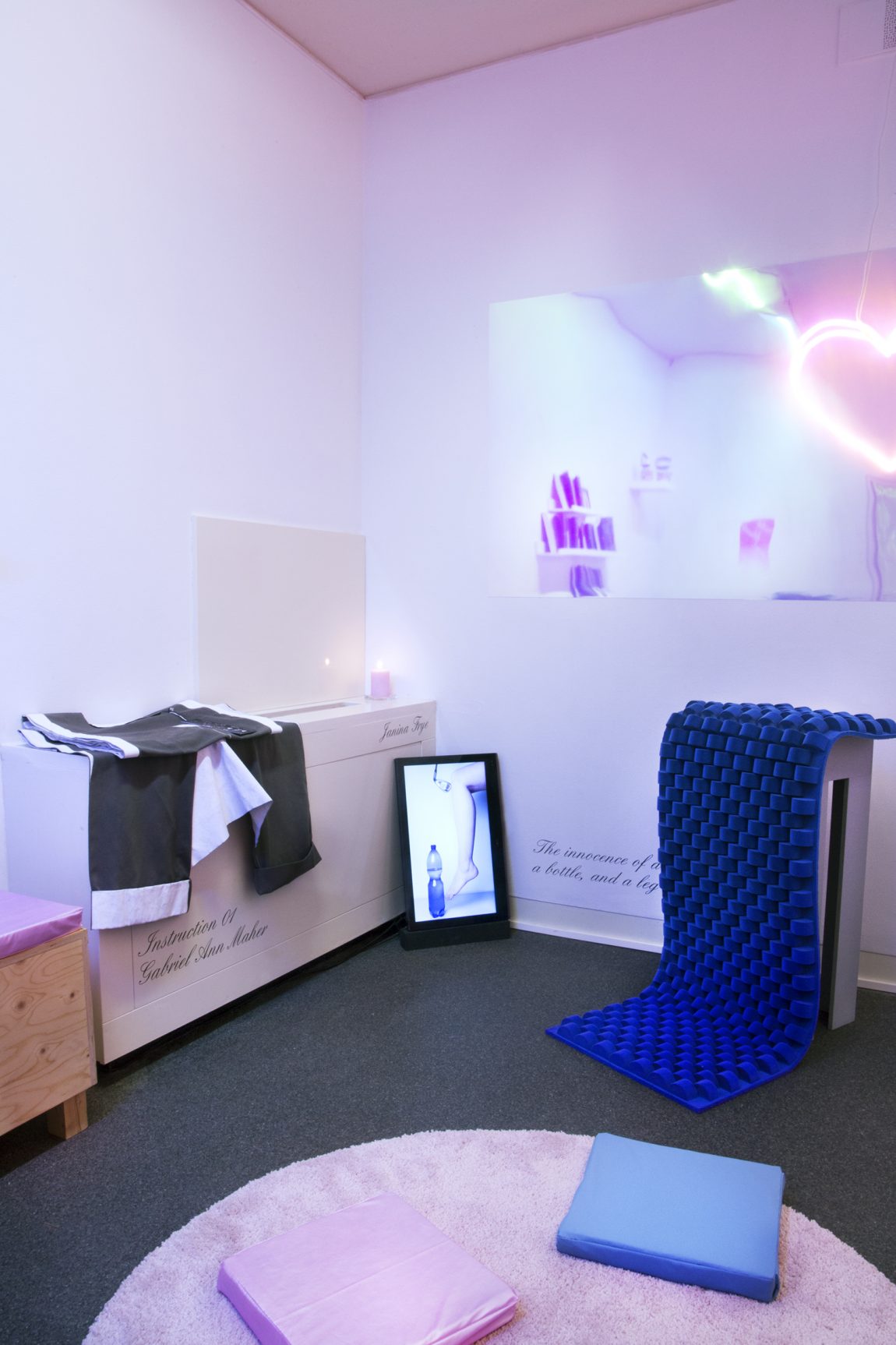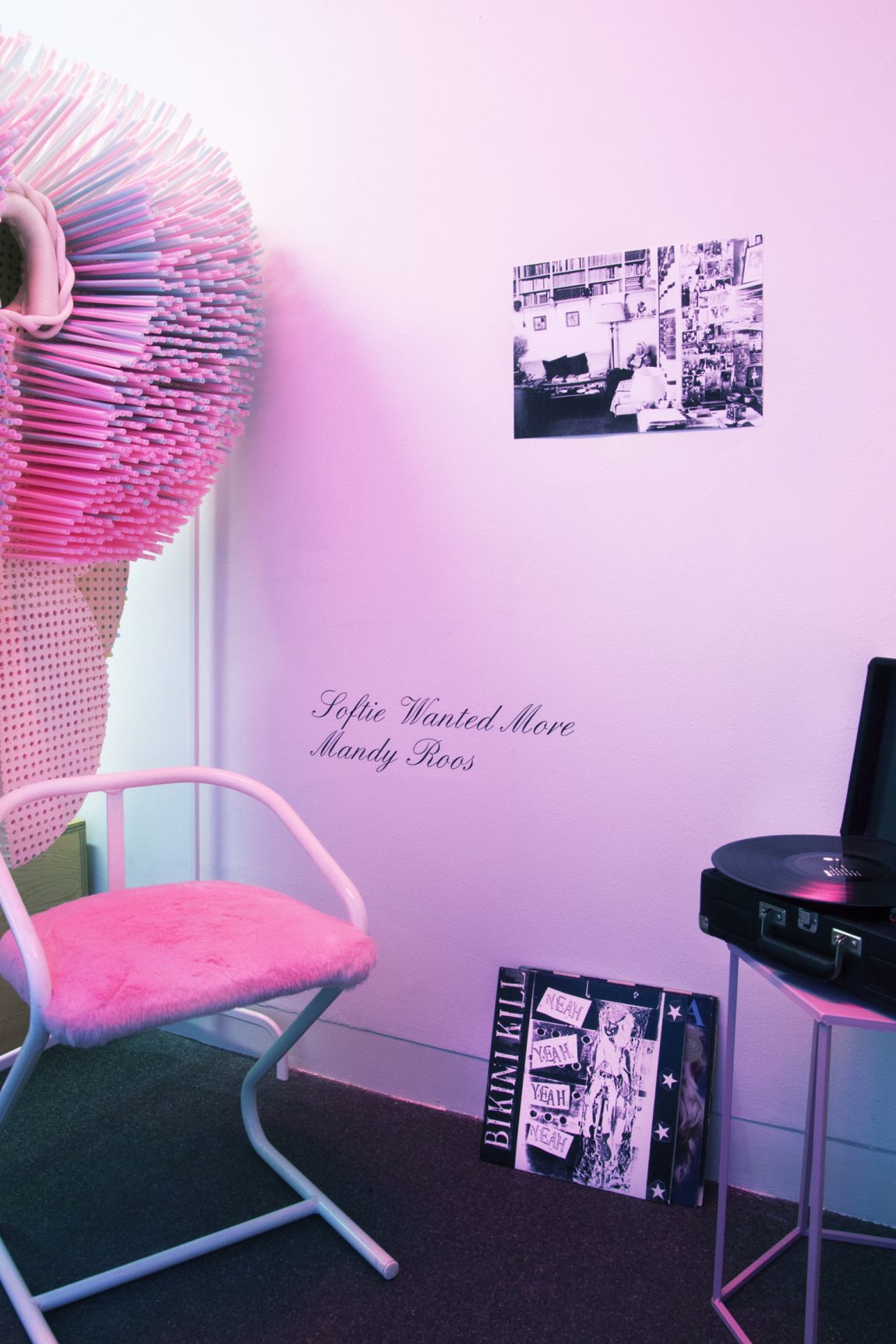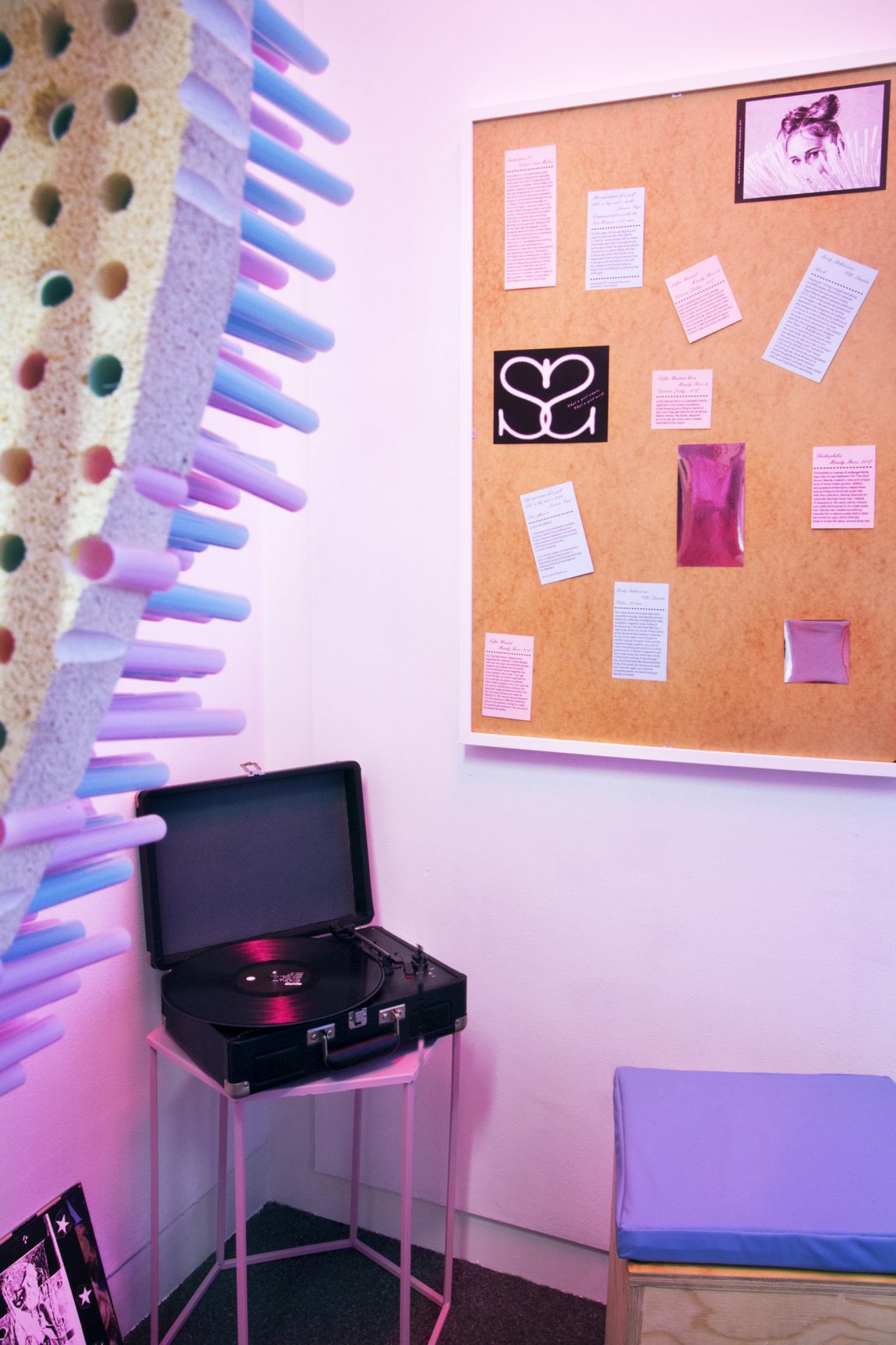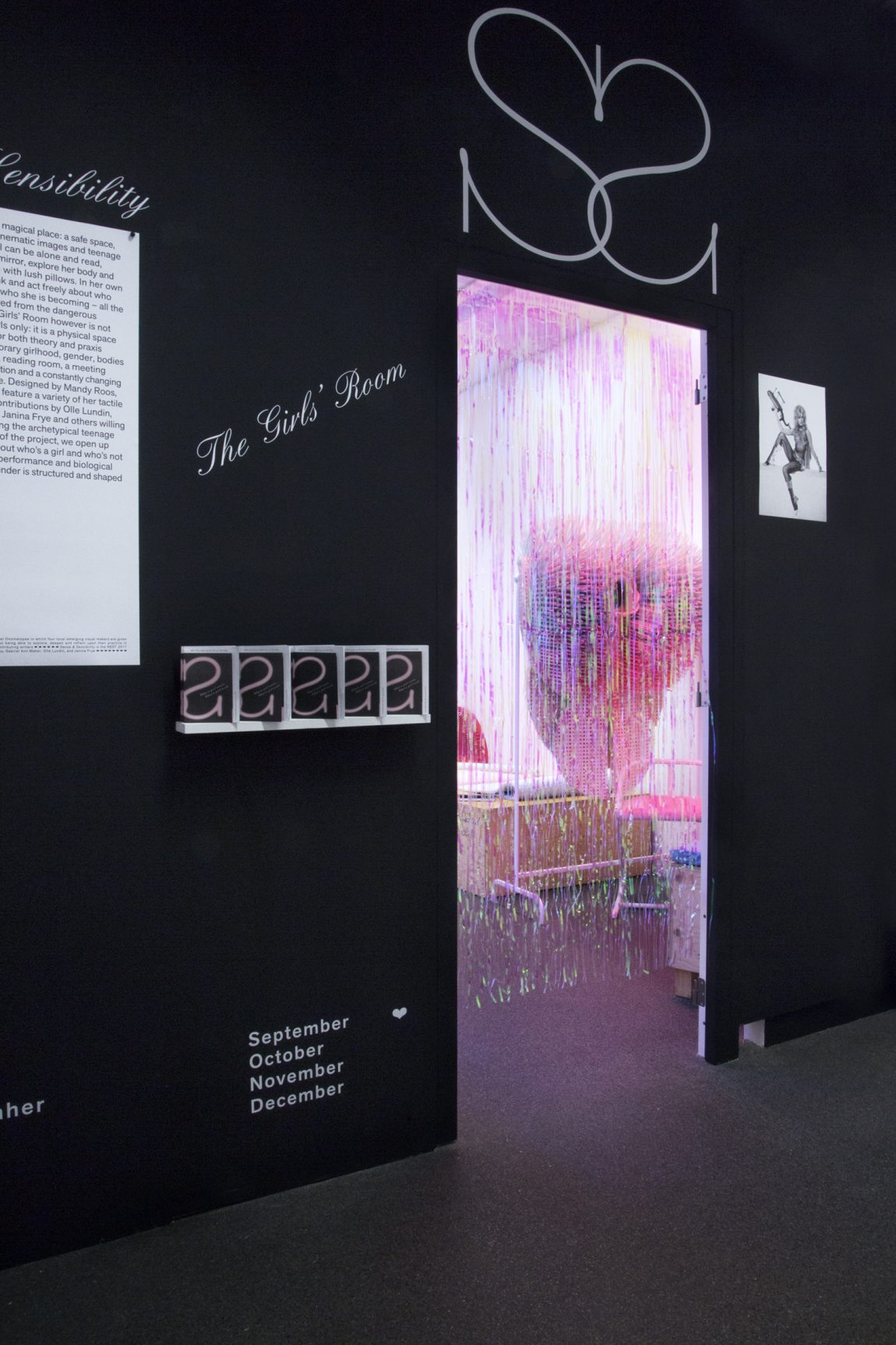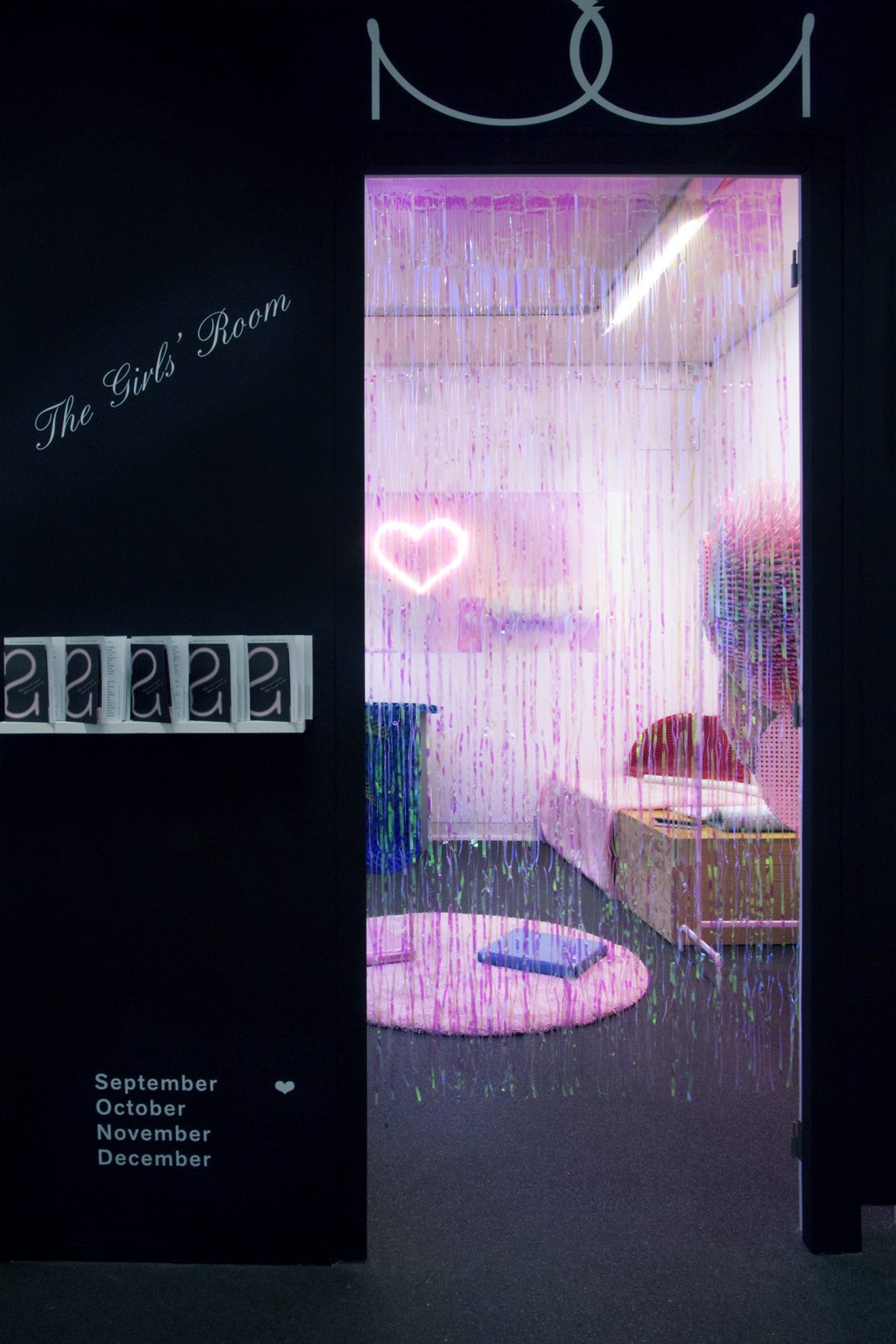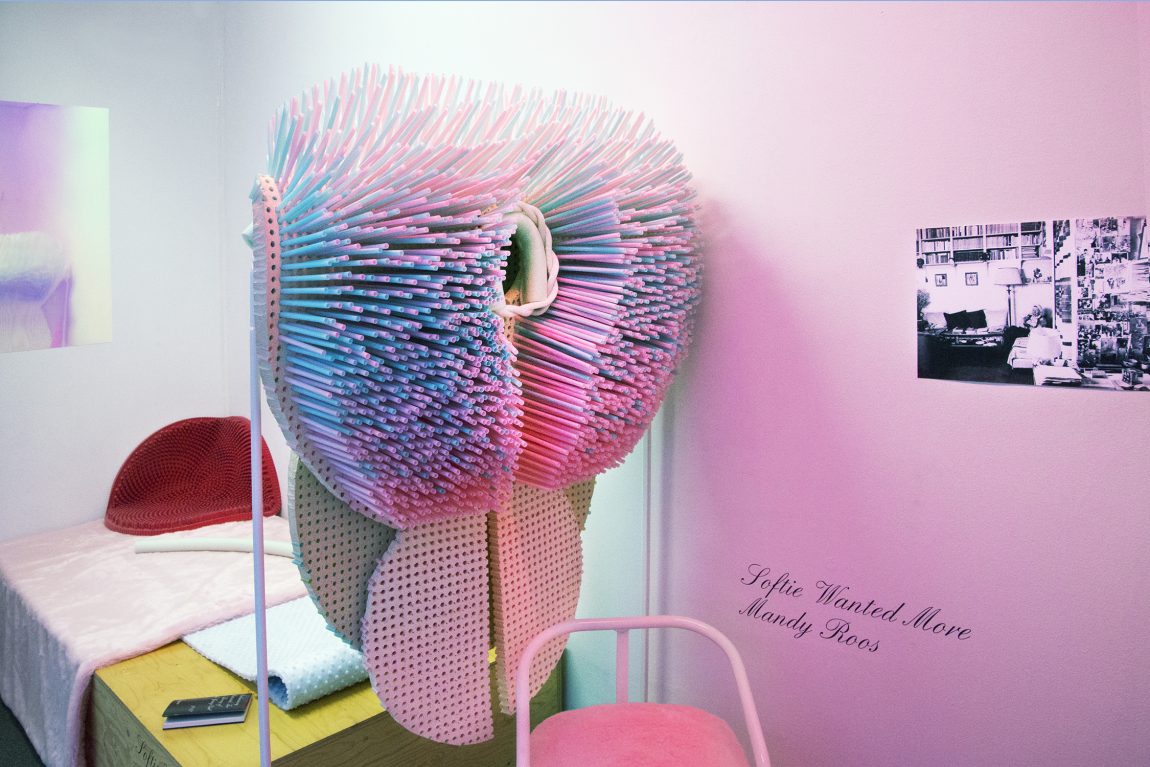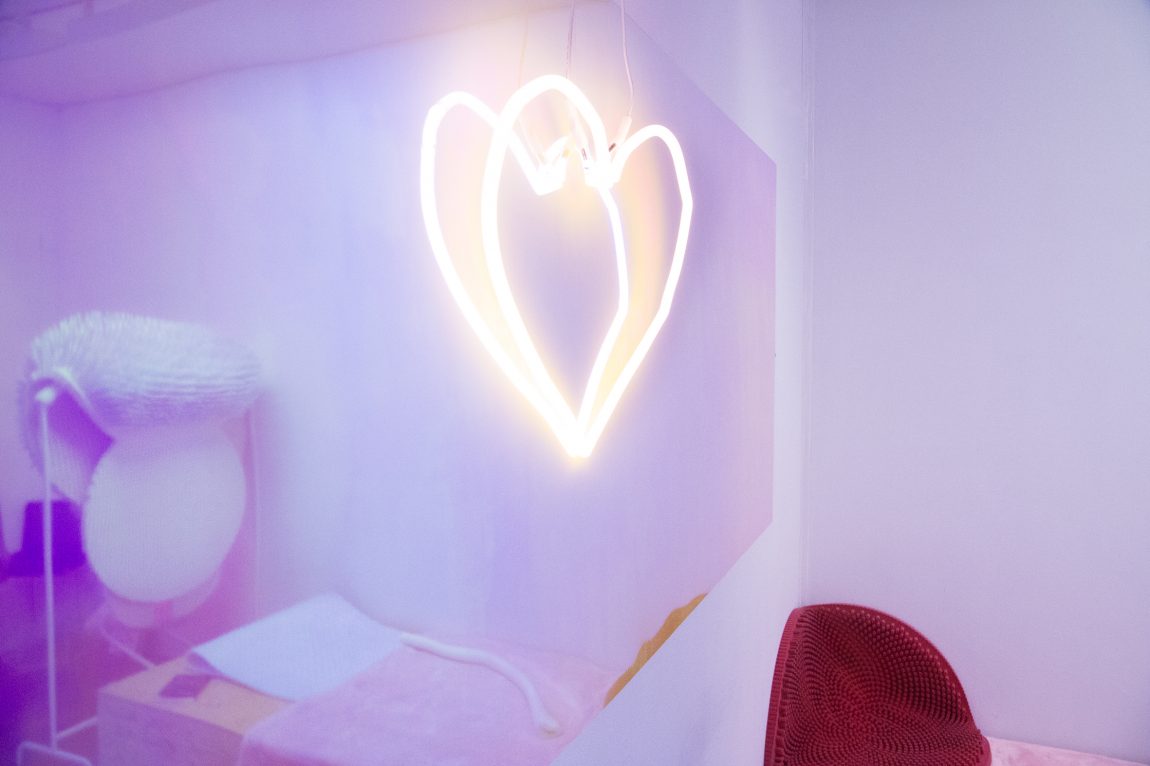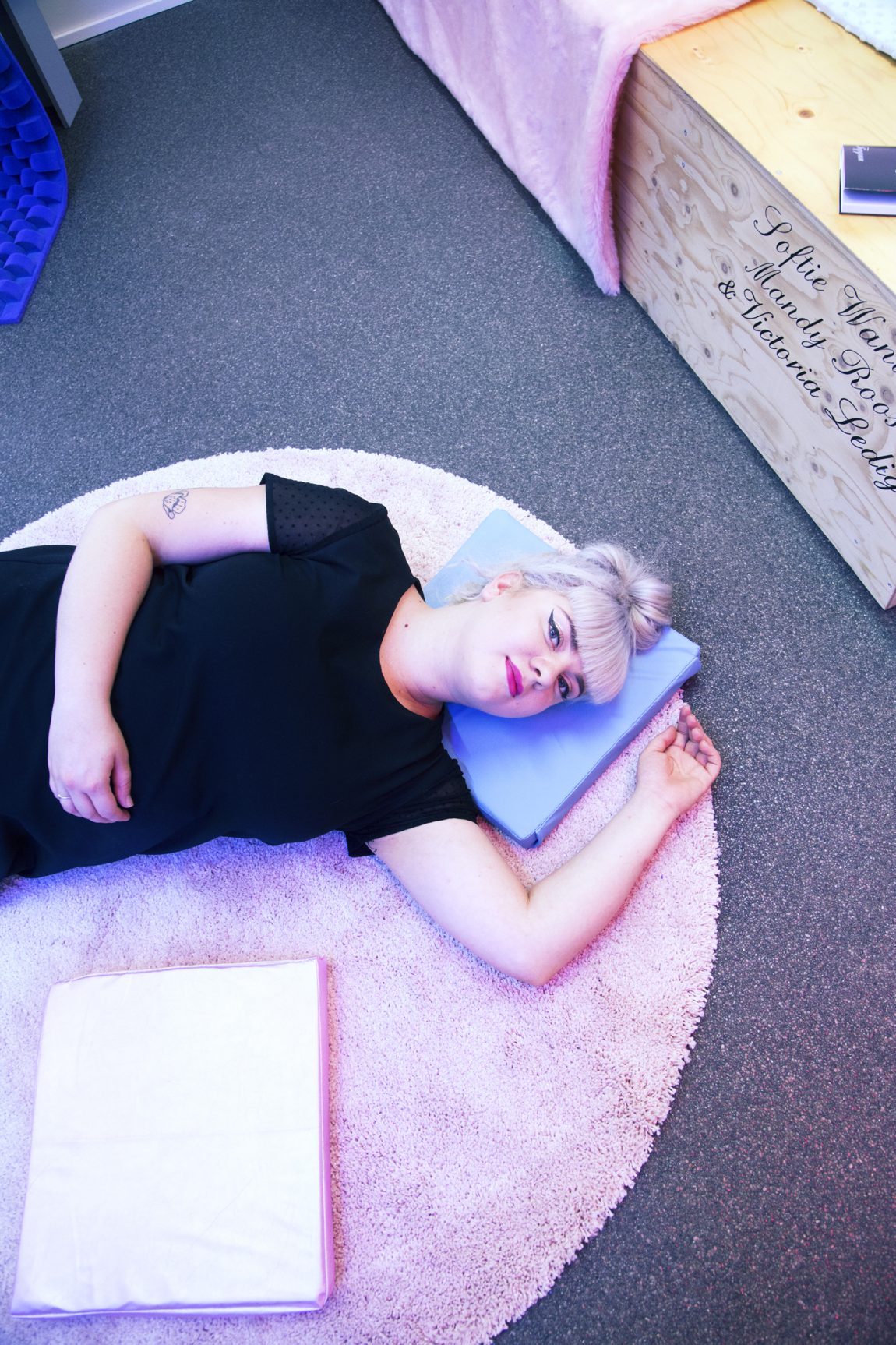A girls’ room is a magical place. The typical girly bedroom is a safe space, mostly constructed from cinematic images and teenage dreams. Here, a girl can be alone and read, look in the mirror, rebel and express, think out loud — all the while being pressured from the brutally dangerous outside world. It is the perfect hideaway to dream away. The contrast between the lush pink space (where a girl can act and think freely, and where her identity can take shape) and the current political climate where protesters get arrested, LGBTQA-rights are at stake and violent cis-male supremacy is reigning the world is dazzling.
You’ve been a very very bad girl, now go to your room!
Other than the name might suggest, Onomatopee’s Girls’ Room is not created for or produced by girls only: it is a physical space and starting point for thought and visual modes of culture regarding gender, bodies and identities. It is a reading room, a meeting place, a group exhibition and a constantly changing installation altogether. By making the archetypical teenage girl the protagonist of the project, we open up the conversation about who is a girl and who’s not in terms of bodies, performance and biological identity and how gender is structured and shaped in our society. The Girls’ Room is the space where the future is being dreamed up, where one can reflect on the past and where contemporary struggles take place.
Inclusive gender liberation goes way beyond the commodification of the colour pink, the repetition of feminist slogans on cheap t-shirts and the popularization of gender-neutralism. Within The Girls’ Room, we try to contradict this trend by offering both theory and praxis by engaged artists working within the theme. In stylistic phenomena and aesthetics, Onomatopee’s Girls’ Room is referring to the American high-school 90s teen bedroom, and therefore is a literal nod to the capitalist trend that is being mistaken for contemporary emancipation.
Within and around the bedroom designed by Mandy Roos, there will be contributions by all Sense and Sensibility participants, and other trouble-makers willing to engage. Mandy Roos is a young, local fashion designer and interior stylist. Inspired by science fiction, daily life and gendered expectation patterns, the objects of Roos are beautiful but strange, and upon closer inspection they tickle you to think about the relation between object and subject, material and function. The designs of Roos cover both domestic- and haute couture. About one of her pieces shown in The Girls’ Room, Softie Wanted (created together with Victoria Ledig), Mandy writes:
Fresh industrial foam seeks young, bold interior application. To fool around, long term commitment possible. Good looks, sense of humor and
love for cuddles are a must. In search of the humor a nd inner nature of materials - the industrial, profane and the fanciful meet up. Creating tangible imagery rooted in play and experimentation.

